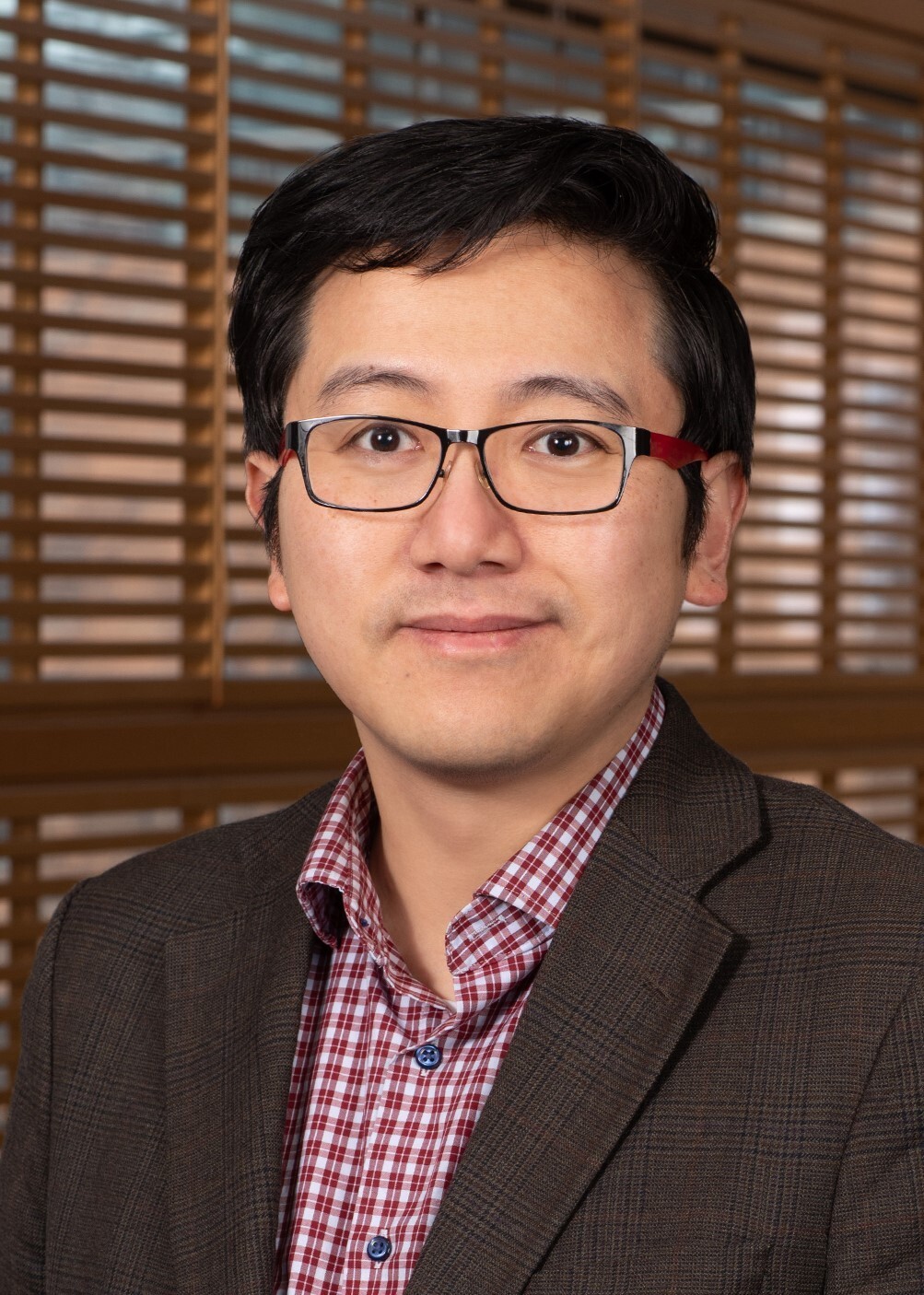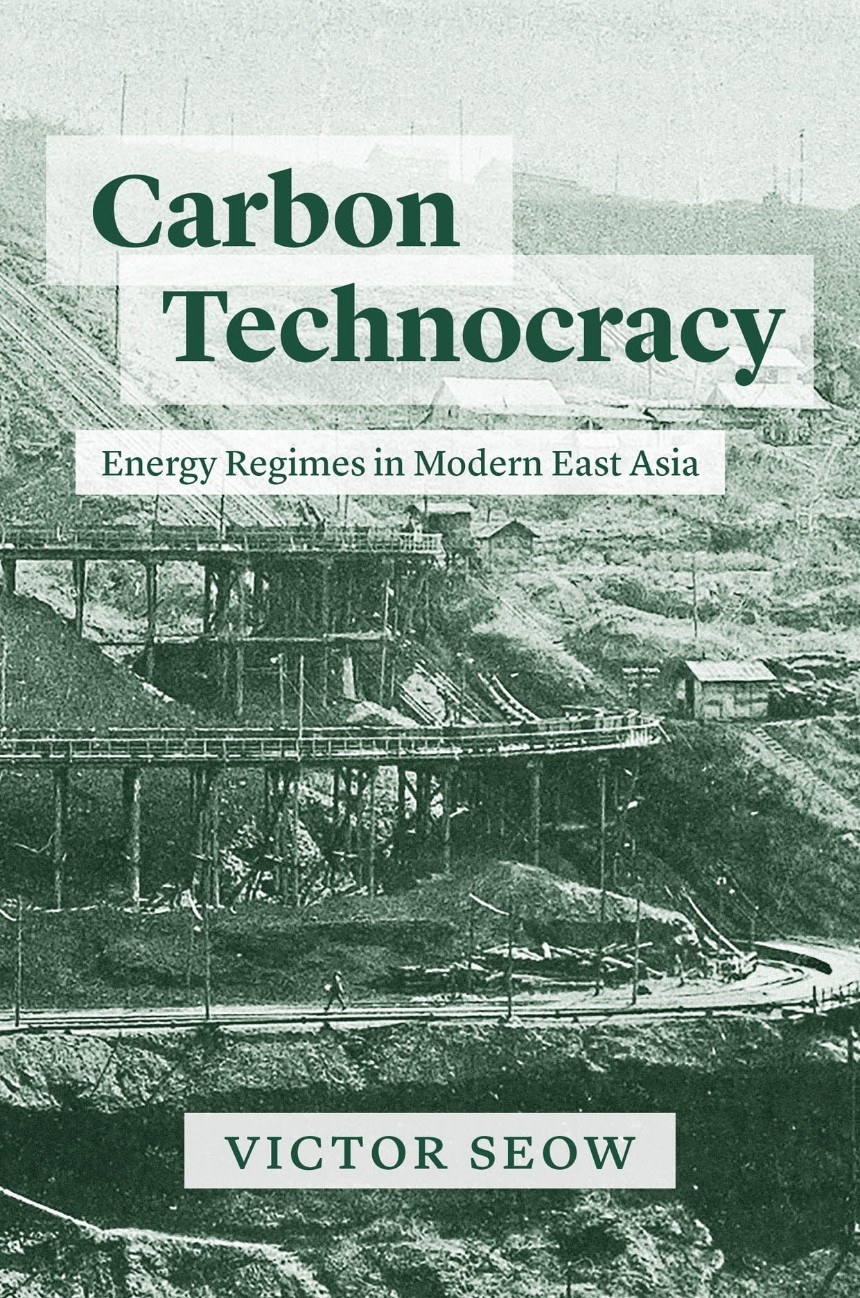WEAI Author Q&A: Victor Seow's "Carbon Technocracy: Energy Regimes in Modern East Asia"

We are excited to announce a new title in the Studies of the Weatherhead East Asian Institute book series: Carbon Technocracy: Energy Regimes in Modern East Asia, published by the University of Chicago Press. The book's author Victor Seow is assistant professor of the history of science at Harvard University.
In Carbon Technocracy, Victor Seow uses the remarkable story of the Fushun colliery to chart how the fossil fuel economy emerged in tandem with the rise of the modern technocratic state. Taking coal as an essential feedstock of national wealth and power, Chinese and Japanese bureaucrats, engineers, and industrialists deployed new technologies like open-pit mining and hydraulic stowage in pursuit of intensive energy extraction. But as much as these mine operators idealized the might of fossil fuel–driven machines, their extractive efforts nevertheless relied heavily on the human labor that those devices were expected to displace. Under the carbon energy regime, countless workers here and elsewhere would be subjected to invasive techniques of labor control, ever-escalating output targets, and the dangers of an increasingly exploited earth.
Although Fushun is no longer the coal capital it once was, the pattern of aggressive fossil-fueled development that led to its ascent endures. As we confront a planetary crisis precipitated by our extravagant consumption of carbon, it holds urgent lessons. This is a groundbreaking exploration of how the mutual production of energy and power came to define industrial modernity and the wider world that carbon made.
We thank Dr. Seow for taking the time to discuss his book with us.

Q: First, can you introduce yourself and your research interests?
Sure thing. But first of all, I just want to thank you for taking the time to read my book and interview me about it. So, I am a historian of science and technology and of China and Japan, and my work revolves around questions of how scientific and technological developments have intersected with economic and environmental transformations in industrial East Asia. Carbon Technocracy sits squarely at the intersection of this range of interests and concerns.
Q: When were you first introduced to the Fushun colliery [what piqued your interest in the first place] and how did it meet or defy your expectations when you visited it for the first time?
I had seen references to the Fushun colliery in books I read early in graduate school, such as Tak Matsusaka’s excellent The Making of Japanese Manchuria. But it did not really capture my attention until I encountered it again in industry reports in the Dalian Municipal Archives in the summer of 2010. I had been interested in the history of migrant workers from North China to Manchuria in the first half of the twentieth century and was on the lookout for a site on the “receiving end” through which I could better understand their lives and labors.
What drew me to Fushun, among others, was the promise of piecing together a rich portrait of these workers through the extensive records that exist for this site. I was also really captivated by the coal that they were mining there. At one point, Fushun accounted for something like four-fifths of the coal output in Manchuria and a sixth of the coal produced across the whole Japanese empire. It would remain the biggest coal mine in China well past the 1949 revolution. This, then, was a site so central to fueling different polities, and I felt that this was a compelling story to tell too.
In terms of my first impressions of the place, I provide an account in both the introduction and epilogue to the book. The thing that most struck me was the depth of the desolation marking this place that was once among the most industrialized in East Asia. This specific observation made its way into the opening lines of the book: “I came in search of the origins of China’s modern industrialization. I found, instead, the beginnings of its end.”
Q: Can you give a brief history of the trajectory and notable moments in the colliery’s operation as it changed hands from Japanese to Chinese Nationalist and then Communist control?
Coal had been mined on and off in the area that is now Fushun over at least a millennium prior to the twentieth century. The Manchu rulers of the Qing dynasty (1644–1912) banned mining here soon after they came to power, though, because of its proximity to the tombs of imperial ancestors and the fear that digging for coal might disrupt the “dragon veins” connected to those sacred sites. Still, that the court had to periodically reissue prohibitions suggest that mining persisted to some degree.
In any case, the colliery traces its origins to the turn of the twentieth, when Chinese merchants secured the rights from the Qing government to mine coal in Fushun. These new enterprises attracted Russian capital, and it was on the basis of that Russian investment that Japan would claim the mines as part of its spoils of war following its victory in the Russo-Japanese War (1904–1905). The Japanese government proceeded to place the mines in the hands of the newly formed South Manchuria Railway Company (Mantetsu), which then ran them for close to forty years. Under Mantetsu’s management, the Fushun colliery came to boast the largest coal mining operations in East Asia, and this colonial corporation deployed various techniques and technologies and mobilized tens of thousands of workers to advance its extractive endeavors.
After the fall of the Japanese empire in 1945, Fushun was occupied first by the Soviets, who looted much of the colliery’s machinery and power generating facilities. They were followed by the Chinese Nationalists, who met with limited success in maintaining operations on site in spite of the best efforts of their technocratic National Resources Commission. And in 1948, amid the civil war, the Chinese Communists seized Fushun. Within a few years, the war-ravaged colliery was restored, a feat that required the help of not only engineers and technicians dispatched by the Soviet Union but also retained Japanese experts. Fushun would then come to be a pivotal part of the new regime’s project of socialist industrialization.
Q: How is Fushun viewed today? When was it at its peak, and what factors were most critical in determining the colliery’s rise and fall?
Fushun, like much of Northeast China, is regarded as past its prime. The entire region had once been China’s industrial heartland, but it has slid into economic decline over the past few decades, becoming thought of as the country’s rustbelt.
The question of peak, if we are to determine it just by output, would be 1960, in the midst of the disastrous Great Leap Forward campaign that resulted in a famine claiming tens of millions of lives. That year, the colliery produced twice as much coal as it did at the high point under Mantetsu’s management in 1936.
But, as the book sets out to show, coal output should by no means be used as a measure of success. Not only because of the emissions from the burning of coal that have been a major factor behind our current planetary crisis. But also because this output was often won through overextraction, which created conditions that both made future production more challenging and placed the workers who mined the coal more squarely in harm’s way.
Q: What is “carbon technocracy,” and where else might this system be observed? [How might future research expand on what you have found through the case of Fushun?]
Carbon technocracy is both an ideology and the system that that ideology brings into being. It regards carbon energy as essential to key statist objectives and correspondingly privileges the extensive exploitation of fossil fuels, particularly through scientific and technological means. Advocates would further embrace coal-fired development, focus on the expansion of heavy industry, champion national autarky, glorify labor-saving mechanization, idealize cheap energy, and track economic growth in terms of increases in energy use.
Carbon technocracy, so defined, could be observed as a striking common denominator across the otherwise different political regimes in this book, from the imperial Japanese to the Chinese Nationalists to the Chinese Communists. My contention, though, is that this extends across the industrial world, and has characterized our relationship with both fossil fuels and the sources of energy touted as alternatives to coal, oil, and gas.
Q: What would you like readers to take away from Carbon Technocracy about fossil fuel production/exploitation in China and perhaps the world as a whole?
There are three main things I would like folks to take away from Carbon Technocracy that relate to the exploitation of fossil fuels not only in China and Japan but across much of the industrial world. First is that states, in their aims and ambitions, were central to the rise of the fossil-fueled economy in the modern era (even as fossil fuels were key to modern state-building projects).
The second takeaway is that there has been a persistent tension between fears of energy scarcity and hopes of accessing limitless supplies of power, primarily through technoscientific means, and that the latter has been a pipe dream predicated on false promises of being able to sustain escalating levels of material consumption as though resources were inexhaustible and our planetary system able to remain habitable in spite of our excesses.
Finally, although the modern era has been one in which we witness the intensification of fossil fuel use, and although much of those fossil fuels have gone towards driving machines that supposedly displace labor, this period and the monumental changes that have taken place within it must also be defined by a continued exploitation of human beings as sources of energy so pivotal to sustaining this world that carbon made.
